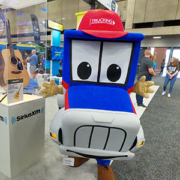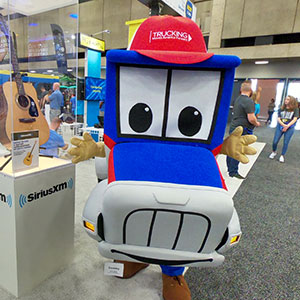Heavy Duty Trucking: ATA, OOIDA, TCA and Others Launch Trucking Image Campaign
By Evan Lockridge
The trucking industry announced Wednesday the launch of an industry-wide image and education campaign, Trucking Moves America Forward, at the Mid-America Trucking Show with support from a diverse group of industry influencers including leading executives, professional truck drivers and technicians.
Trucking Moves America Forward is an industry-wide image and education initiative informing policy makers, motorists and the public about the benefits of the trucking industry to help build a ground swell of political and grassroots support necessary to strengthen and grow the industry.
“Today’s modern truck drivers are skilled professionals and devoted family men and women, trained to focus on safety, efficiency and reliability while operating the safest and most sustainable trucks we have seen to-date,” said Steve Ponder, chairman, Trucking Moves America Forward and vice-president of Great West Casualty Company. “Trucking is an important industry to our country, nearly every consumer good touches a truck along its journey and we are excited to share what makes trucking so special with the American people.”
In addition to Ponder, other trucking executives such as TMAF vice chairman Kevin Burch of the fleet Jet Express spoke about Trucking Moves America Forward along with professional driver Allen Boyd and technician Herschel Evans.
“Trucking Moves America Forward is an ongoing movement,” said Burch. “Trucking is critical to the American economy, injecting more than $642 million dollars into this country annually, and each person in the industry plays an important role in telling that story.”
“We plan to share those stories in the coming year and beyond with various initiatives,” said Mike Card chairman, fundraising of Trucking Moves America Forward and president of Combined Transport Inc. “The entire industry is excited as this campaign encompasses every sector within the industry and we welcome everyone’s support.”
Groups involving in Trucking Moves America Forward include ACT 1, also known as the Allied Committee for the Trucking Industry, which includes various trucking industry suppliers, along with the American Trucking Associations, the Owner-Operator Independent Drivers Association, the Truckload Carriers Association, as well as trucking companies and other industry suppliers who are not members of ACT 1.
The Teamsters Union has also been approached about becoming involved in the campaign, according to organizers, and are said to be considering their involvement.
The goal is to raise $5 million over the next five years to fund their efforts, with organizers saying they are halfway to meeting this year’s $1 million goal.
Trucking Moves America Forward was tentatively announced this past October at American Trucking Associations annual Management Conference & Exhibition in Orlando, Fla.


